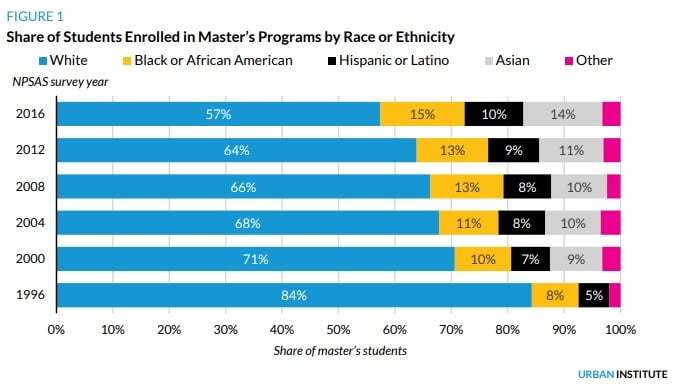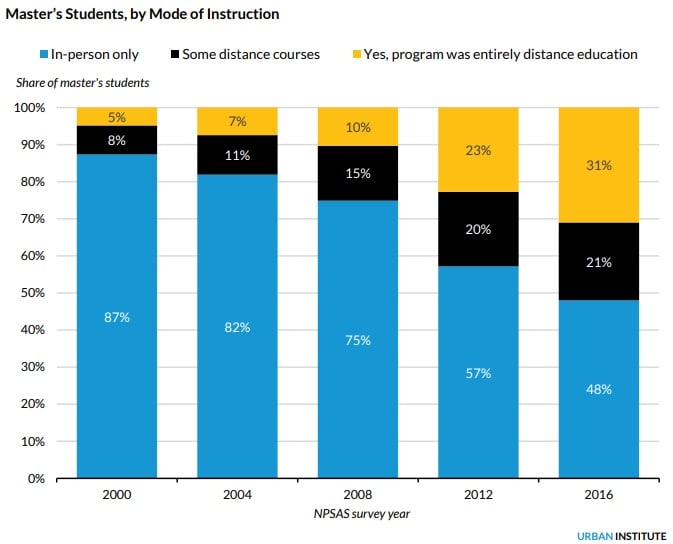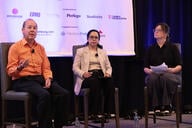You have /5 articles left.
Sign up for a free account or log in.
Master's degree programs have grown more popular, enroll more diverse students and are increasingly offered online, according to a new analysis from the Urban Institute. They're also getting more expensive, with net prices having risen faster for master's degrees than bachelor's degrees.
About 785,000 master's degrees were awarded in the U.S. during the 2015-16 academic year, a rate of about two master's for every five bachelor's degrees awarded, according to the analysis, which was authored by Kristin Blagg, a research associate in the institute's education policy program.
Over the past two decades, master's programs gradually have enrolled a larger share of students from underrepresented racial and ethnic backgrounds. For example, the share of black and Hispanic students has nearly doubled over that period, to 25 percent in 2016 from 14 percent in 1996. During the same time, master's programs themselves have gotten more diverse, the analysis found, with more specialized offerings.

The rate of enrollment in online master's courses or programs has increased substantially since 2000, and is more common than among bachelor's degree programs. The analysis found that 31 percent of students enrolled in master's degree tracks in 2016 reported that their program was entirely online, with 21 percent reporting that they took some (but not all) classes online. In contrast, 12 percent of bachelor's degree students were enrolled in fully online programs, and 31 percent reported taking some online courses. (See chart, below.)
Online education may be particularly well suited for students in master's programs, according to the analysis, because these students tend to be proactive and self-directed learners who are more likely to be educated and employed.
"Although the broader completion, labor market, and borrowing outcomes of students who enrolled in online master’s programs are still unknown, master’s students would likely have better outcomes from enrolling in online education than students who take up noncredit or undergraduate online programs," Blagg wrote.
Prices are outpacing the popularity of master's degrees, however, as tuition and fees for full-time master's students rose by 79 percent during the last 20 years, compared to a 47 percent increase for full-time bachelor's students.
The analysis said the U.S. Congress should consider borrowing patterns for master's programs as they seek to reauthorize the Higher Education Act, which is the law that governs federal financial aid.
"Specifically, policy makers may want to develop a better understanding of lending outcomes for master’s students and whether students in these programs can repay their loans," said Blagg. "Policy makers should seek more concrete estimates of the returns to different master’s degree fields, particularly newer programs, and compare these with the program prices."





